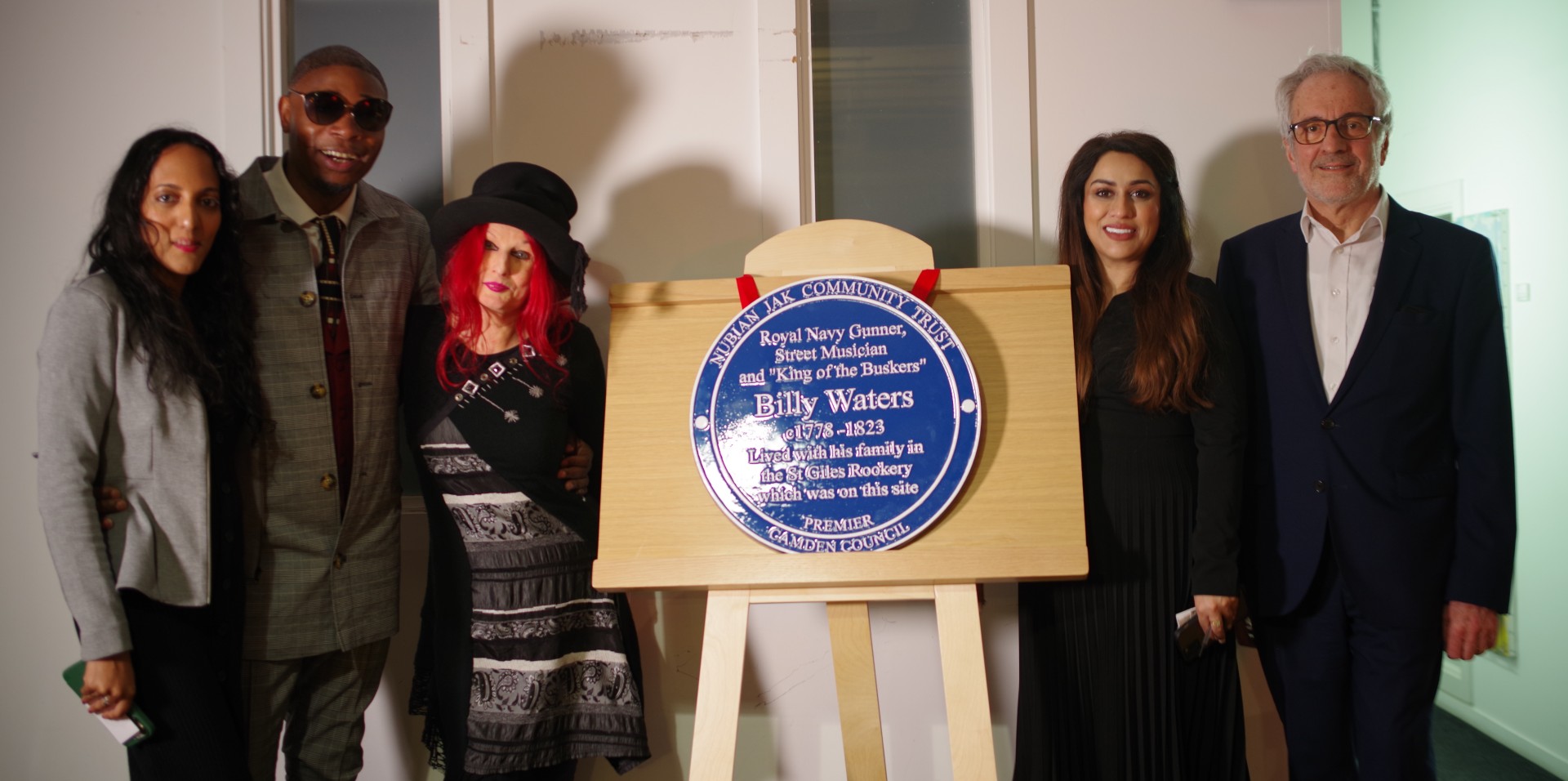Billy Waters: Pioneering African American musician commemorated in Camden
The life of pioneering African American musician Billy Waters has been commemorated on the two-hundredth anniversary of his death.
Camden council partnered with the Nubian Jak Community Trust, an organisation dedicated to installing blue plaques commemorating significant individuals from underrepresented groups, to install a plaque to commemorate Billy.
The plaque was unveiled on Tuesday, 21 March 2023, both the two-hundredth anniversary of his death and International Day for the Elimination of Racial Discrimination.
Camden Council recently agreed a diversity in the public realm strategy for the borough – in which Camden commits to going further to represent, empower and celebrate its diverse communities in its public spaces.

In Camden we are committed to addressing inequalities, building our communities strength, and increasing diversity and inclusion.
We want to commemorate pioneering individuals from communities that have historically been underrepresented, as part of a wider effort across London to make our public spaces reflect the diversity of the capital’s communities.
Billy Waters is a brilliant example of this. In his life he faced huge discrimination, defamation and poverty and we should remember this alongside his legacy – he was a trailblazer for busking and street entertainment which Camden has since become renowned for.
Billy was born during the American Revolution and enlisted in the Royal Navy in 1811. On a voyage, Billy fell from the main yard to the deck, breaking both his legs, requiring the amputation of his left leg.
Billy went to live in the poor London parish of St Giles-in-the-Fields, north of Covent Garden, where he started a family. His naval pension as a wounded war-veteran proved inadequate, and to maintain his wife and two young children he turned to busking in the West End, his main pitch outside the Adelphi Theatre on the Strand. In the evening, Billy played in public houses around St Giles. He was closely associated with The Rose and Crown, colloquially known as the “Beggar’s Opera”.
Billy cut a flamboyant figure, wearing a military-style bicorn hat with feathers, a judge’s white ‘cauliflower’ wig, a bright waistcoat, and a tattered sailor’s jacket.
Many people saw and heard Billy perform, and several leading artists of the day depicted Billy in drawings, paintings, and engravings, including brothers George and Robert Cruikshank.
In 1821, writer Pierce Egan published the episodic book ‘Life in London’ which proved a massive success and included a key scene in a thinly disguised “Beggar’s Opera”. George Cruikshank’s superb image of the interior pictured Billy Waters playing for dancers. Though Billy wasn’t named he was widely recognised.
However, Billy then suffered cruel defamation. ‘Life in London’ was quickly adapted for the stage as ‘Tom and Jerry’, which ran to more than 300 performances and broke all box-office records. In this, a comic actor played a character named “Billy Waters”, who was portrayed as the bullying and ludicrous leader of a group of beggars.
While he became the first performer of African descent represented in a West End production, the false and racist portrayal resulted in the loss of Billy’s reputation, his meagre income as a busker and his very identity.
This defamation gave the moral reformers of the Mendicity Society - whose mission was to rid the streets of beggars and homeless people – an opportunity. Two weeks after Tom and Jerry opened, Billy was arrested twice on the same day, and made to swear never to busk again with the threat of imprisonment and separation from his family. With no means left to support them, he was a broken man.
In early 1823, Billy’s health rapidly declined, and after pawning his fiddle he entered the St Giles workhouse, where he died ten days later. He was given an unmarked “pauper’s grave” in the St Giles burial ground beside Old St. Pancras Church.
Billy is an urban folk-hero and the ancestor of blues musicians, rockers, break-dancers, and rappers everywhere today.
The plaque has been installed on a building on the corner of Dyott Street and Bucknall Street, the site of the building where Billy Waters lived with his family and which now houses Premier, fittingly an entertainment, arts and culture agency.
Nubian Jak Community Trust said:
“The trust is delighted to work with Camden council and Premier to memorialise Billy Waters on the bicentenary of his passing.
“Billy was one the most important street musicians of 19th century London, and it's fitting his blue heritage plaque should be installed on the Premier building, which is the site of the old rookery, where Billy once lived with his wife and children.”
You can read more information on the life of Billy Waters online.
The above photo, from left to right, shows (photo credit Oscar Kemanci):
- Mathurini Visakan – Camden Council
- Jak Beula – Nubian Jak Community Trust
- Jane Palm-Gold - historian
- Councillor Nadia Shah – Cabinet Member for Voluntary Sector, Equalities and Cohesion
- John Reiss – Executive Chairman Premier


